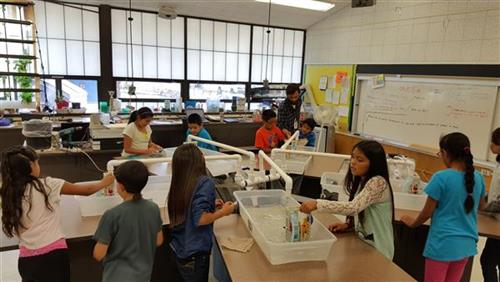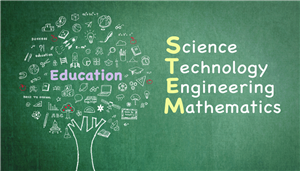Projects
Page Navigation
-
4th Grade
-
Structure and Function Unit (6 Weeks)Within 4th grade's structure and function unit, students learn about structures within plants and animals and their corresponding functions. Students also learn about behavioral and physical animal adaptations in which they observe first hand in a field experience to Bearizona where they obtain a local relevance on the subject. Within this field experience students identify various local species and their unique physical structures and adaptations and relate them to their corresponding function.
-
Energy, Fuel, and Natural Resources (6 Weeks)In our energy unit, 4th Grade students are engaged in the understanding to how energy is transferred from natural resources and how it is utilized in modern society. Students learn about differentiating resources for energy and understand the differences between nonrenewable energy stored in fossil fuels and renewable energy resources such as hydroelectric, solar power, and wind power. We engage our students in multiple hands-on activities and experiments to provide a real word reference and allow our students to see power generated from a first-hand perspective.

-
Rock Formations, Fossils and Erosion (6 weeks)In this unit, we introduce our 4th graders to understanding the concept of how landmasses constantly change over time. We first introduce them to this unit with an engaging field experience to the Grand Canyon to provoke curiosity and give our students a first hand observation of how erosion and other forces can form astonishing rock formations. At the Grand Canyon our students are engaged in various engaging activities such as, identifying fossils, matching vocabulary words with their associated examples, and identifying various rocks and minerals found at the site.The unit is then continued in the classroom in which we further elaborate the concepts introduced during the Grand Canyon trip through aligning our STEM curriculum with our English and Literary curriculum by giving our students engaging readings and allowing them to write intriguing reports on their findings.We also implement usage of the scientific method and experimentation for our students to gain a hands-on perspective of erosion by engaging them with a hands-on experiment in small groups. In this experiment, they collaborate with their fellow group members to form a plateau using various types of sands with differing densities and colors. Once they create their unique plateau, a cup with a small hole is placed in front of them and they are instructed to place it above their sand plateau and pour water into the cup. However, prior to pouring the water into the cup, each student creates a hypothesis to predict what will happen at the end of the experiment and why. As they simulate erosion into their plateaus, each student witnesses that different patterns occur because of how they layered the sand and how fast the stream of water went into it to carve simulated canyons and valleys.
-
Aligned Standards:Structure and Function UnitELA
- 4-RI-7: Interpret information presented visually, orally, or quantitatively (e.g., charts, graphs, diagrams, timeline, animations, or interactive elements on Web pages) and explain how the information contributes to an understanding of the text in which appears.
- 4-RI-9: Integrate information from two texts on the same topic in order to write or speak about the subject knowledge.
- 4-W-9: Draw evidence from literary or informational texts to support analysis, reflection, and research.
Science- 4-LS-1-1: Construct an argument that plants and animals have internal and external structures that function to support survival, growth, behavior, and reproduction.
- 4-LS-1-2: Use a model to describe that animals receive different types of information through their senses, process the in their brain, and respond to the information in different ways
Energy, Fuel, and Natural ResourcesELA- 4-RI-1: Refer to details and examples in a text, explicitly and inferring.
- 4-RI-9: Integrate information from two texts on the same topic.
- 4-ESS-3-1: Obtain and combine information to describe that energy and fuels are derived from natural resources and their uses affect the environment.
- 4-PS-3-2: Make observations to provide evidence that energy can be transferred from place to place by sound, light, heat, and electric currents.
- 4-PS-3-4: Apply scientific ideas to design, test, and refine a device that converts energy from one form to another
Rock Formations, Fossils, and ErosionELA- 4-RI-1: Refer to details and examples in a text when explaining what the text says explicitly and when drawing inferences from the text.
- 4-RI-4: Determine the meaning of general academic and domain-specific words or phrases in a text relevant to a grade 4 topic or subject area.
- 4-RI-5: Describe the overall structure (e.g., chronology, comparison, cause/effect, and problem/solution) of events, ideas, concepts or information in a text or part of a text.
- 4-ESS1-1: Identify evidence from patterns in rock formations and fossils in rock layers to support an explanation for changes in a landscape over time.
- 4-ESS2-1: Make observations and/or measurements to provide evidence of the effects of weathering or the rate of erosion by water, ice, wind, or vegetation.
- 4-ESS2-2: Analyze and interpret data from maps to describe patterns of Earth’s features.


